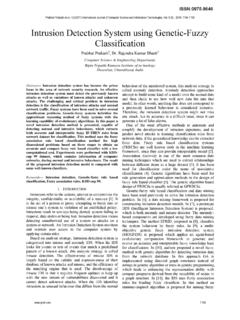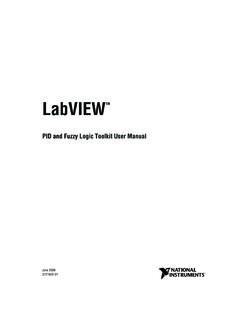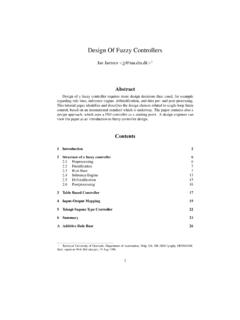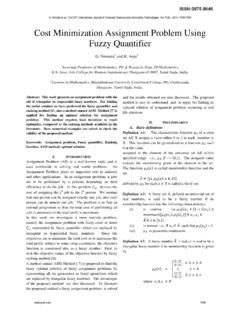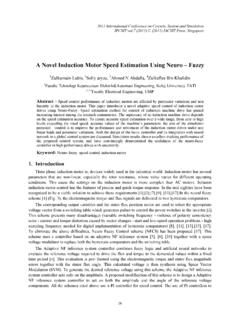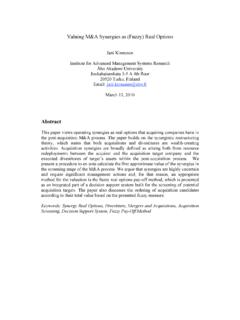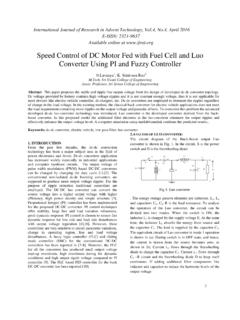Transcription of Operating ServiceManual - FuzzyMuzzle.net
1 Operating &ServiceManualOperating&Service ManualNo liability is assumed for damages resulting in the use of the information contained Air Locker locking differentials and Air Locker are trademarks of ARB Corporation product names used herein are for identification purposes only and may be trademarks of their respective the ARB Air Locker Works:Why Lock a Diff? - The History of Air Locker1 The Air Locker Concept2 Operating Instructions:General Air Locker Use4On Highway Use5 Off Road Use6 Safety Considerations 8 ARB - Not Just Air Lockers10 Service Guide:Lubricants Specifications12 Regular Service Schedule13In Field Service/Repair13 Trouble Shooting14 Genuine Air Locker Accessories18 Warranty19 Why Lock a Diff? - The History of Air LockerFour wheel driving across rough terrain can lead to some of the mostexhilarating adventures one could have. But as any four wheeler cantell you; spinning your wheels and getting stuck leads to nothing butfrustration.
2 Often you know you have the right vehicle to take on the mostextreme terrain, yet still you find that it baulks at the slightest of obstacles,losing traction at the most inappropriate times, leaving you stranded problem is quite simple one (or more) of your vehicle s wheels islosing traction, and your highway minded factory differential center isdirecting ALL of your vehicle s power to those spinning wheels. Newervehicles with limited slip differentials (LSDs) may offer some improvementover standard diffs, but more often you ll find the slipping is not as limited as you need to keep you going. Automatic locking differentials also havetheir disadvantages: they can be very noisy when disengaging and willupset the on highway driving characteristics of your has been challenging conventional thinking of off road equipmentdesigns for over 25 years, and the ARB Air Locker has been a successstory from the start.
3 Born of the need to get 100% traction when you needit, without sacrificing anyof your vehicle s highway driving performance,ARB Air Lockers employ the same air compressor commonly used by fourwheel drivers to control their tyre pressures and to activate and deactivatea solid and durable lock inside the differential center. This gives you thetraction you need, when you need it, all at the flip of a switch, all withinthe safety and comfort of the driver s the Air Locker Works12 Standard OpenDifferentialARB's Air Locker Locking Differential3 When unlocked, ARB Air Lockers operate much the same as conventional open differentials. Driving force applied to the ringgear rotates the differential center but does not directly drive theaxle shafts. Small bevel gears known as pinions rotate freely on the crossshaft(s) which are securely fixed to the body of the differential.
4 The axleshafts are joined by a splined coupling to the two larger bevel gears,known as side gears, which are supported by the differential body inconstant mesh with the pinions. When one axle rotates inside the differential,it drives the pinion gears which in turn drives the opposite axle, only in theopposite direction of rotation. This is called differential action. Undernormal circumstances this action benefits your vehicle by allowing theoutside wheel to spin faster than the inside wheel when turning; anabsolute necessity for highway driving. Unfortunately, differential actiononly works so long as both wheels have full traction with the road. Onceone wheel loses grip ( , one wheel is on a slippery surface or suspendedin mid air) the differential transfers its driving force to the wheel that iseasiest to turn ( , the slipping wheel) and therefore all the driving torqueis advantage of the ARB Air Locker lies in the pneumatically operatedlocking system inside the body of the differential which, when activated,prevents the differential gears from rotating and therefore preventing differential action between the axles.
5 With both wheels tied directly to the rotation of the ring gear (a system sometimes referred to as a spool )the vehicle maintains maximum possible traction at all Air Locker Concept4 General Air Locker UseAir Locker differentials can be engaged and disengaged at the flip of a you need the extra traction, simply turn on your compressor, approachthe difficult terrain, and press the Air Locker switch; even if you are stillmoving! Once you are past your trouble spot, flip the switch back againand the Air Locker will disengage and return your vehicle to normal InstructionsPush OnIlluminated With Dash LightsIlluminated When Switch Is ActivatedPush Off5 Although Operating a switch may require very little skill, knowingwhen to use your Air Locker, and what to expect from your vehiclewhile using it, is indeed a skill and requires a level of understandingand experience before you can safely and effectively get the most out ofyour engage the Air Locker during cornering or when the wheels are spinningas this could damage the locking mechanism.
6 Just as you wouldn t put yourvehicle in gear without using the clutch, the gears in your Air Locker need to bedoing roughly the same speed before you engage them as well. Also, rememberthat your Air Locker doesn t necessarily engage instantaneously when yourvehicle is stationary. You may need to roll the vehicle a little bit until the teeth ofthe locking mechanism can fall into disengaging your Air Locker, always remember that the teeth of thelocking mechanism cannot disengage while under torque. Your Air Lockerwas designed to stay locked under the harshest of loads, and therefore,even with the switch disengaged you will sometimes need to untorqueyour axle by rolling your vehicle forward or backward slightly before thelocking mechanism will Highway UseARB s Air Locker range of locking differentials offers one big advantagethat few of its competitors can even come close the highway you won t even know it s there!
7 With your Air Locker disengaged (switched OFF) it behaves and performsno different than any regular open differential that comes standard withmost vehicles from the manufacturer. There is no disconcerting jolt or specialdriving techniques to get used to as there is with most other lockers onthe the snow your vehicle can easily lose traction, understeering intogradual corners, oversteering out of tight corners, and often spinningits wheels rather than moving at all. Engaging your Air Locker will helpyou get rolling through the trouble spots. Some operators prefer to leavethem engaged while driving in snow, but remember; engaging your Air Locker will change the way your steering behaves, especially whenusing a front Air Locker. Take it slow at first and give yourself time to getused to it before you try anything too not in use, simply keep your Air Locker(s) as well as your air compressorswitched OFF.
8 ARB s own range of off road, special purpose air compressorscome with an isolating switch to keep your air compressor from charging upwhen you don t need it. We highly recommend an isolating switch for all highway use Road UseDRIVING ON LEVEL, HIGH TRACTION SURFACES- As long as all wheelscan stay in contact with a high traction surface, locking a differential isnot necessary and could place undue load on your drive train. Corneringon high traction terrain with your differential locked (especially the front)is never recommended as it creates high torque load across your axleshafts and CVs. In these cases it is preferable to leave your Air Lockersunlocked until the need for them ON LEVEL, LOW TRACTION TERRAIN- Heavy traction loss canaffect overall vehicle control with open or unlocked differentials, as tractionis randomly transferred from side to side across the axle.
9 Off road drivingcontrol will be greatly enhanced through mud, snow, water, loose graveland other forms of low traction surfaces when one or both Air Lockers areengaged. Gentle throttle and smooth methodical steering will keep thevehicle moving steadily where you point ON UNEVEN TERRAIN Rock crawling, ditch crossing and other highly challenging forms of off road driving can render it impossibleto keep four wheels on the ground. Locking your Air Locker(s) can oftenbe your only alternative to a winch or a tow. Plan your path across suchobstacles so you don t compromise your vehicle s center of gravity androll over. Use low range and idle throttle where possible and UPHILL Try to align the vehicle straight up the incline and keepthe rear Air Locker engaged to maintain a constant push. Maintain a verylight approach to throttle use (AIM FOR ZERO WHEEL SPIN). Use of thefront Air Locker in this situation is greatly dependent on the nature of theterrain and mostly dependent on the feel.
10 DRIVING DOWNHILL Again, as with all hill driving, straight down the hill is preferable to descent at an angle. Always use engine braking, if possible, over foot braking. Engage the rear Air Locker once you start moving. Use of the front Air Locker can be of great benefit when enginebraking downhill as it prevents the sudden surge felt when one wheelbreaks traction, but driver preference must still make the final OFF CAMBER When traversing an incline sideways on a surface with low or unpredictable traction (a situation best avoided if possible), leave both Air Lockers disengaged. Having both wheels driventogether may promote slipping, where an unlocked axle should allow each wheel to find its deepest traction point. Limiting your throttle to alow range idle and not braking unless necessary will help your tyres biteinto a loose Considerations - PLEASE READ THOROUGHLYYour ARB Air Locker was engineered as a safety enhancementto theuse of your vehicle.
